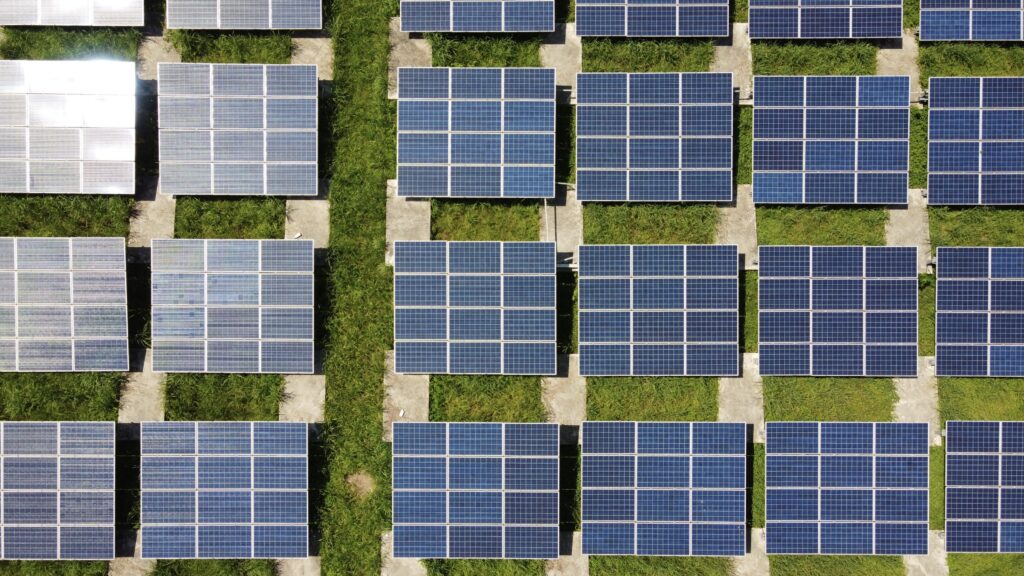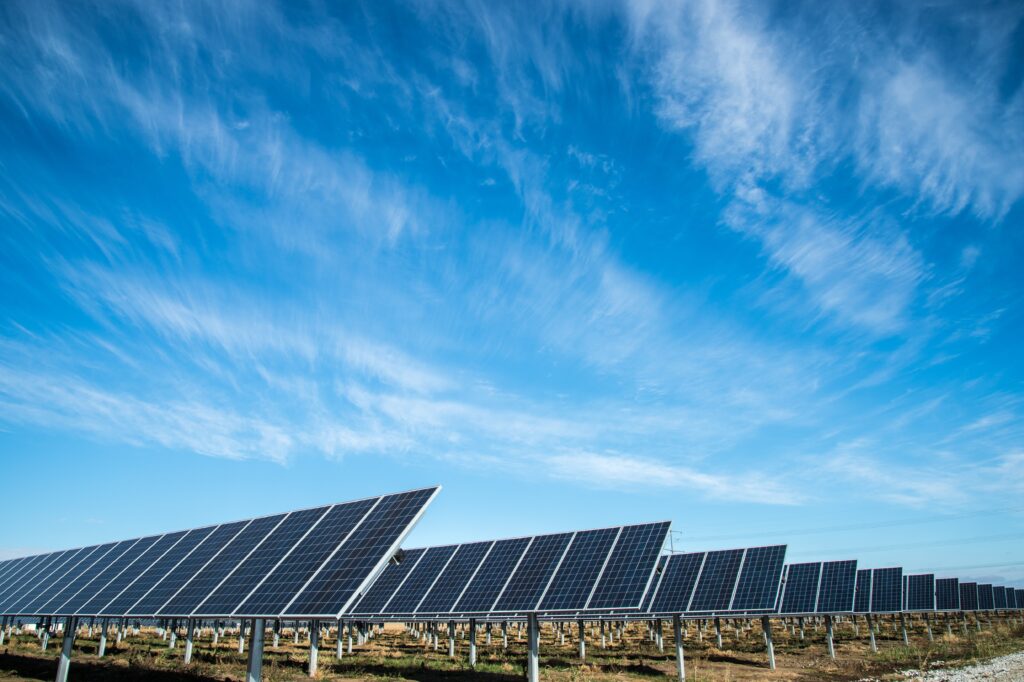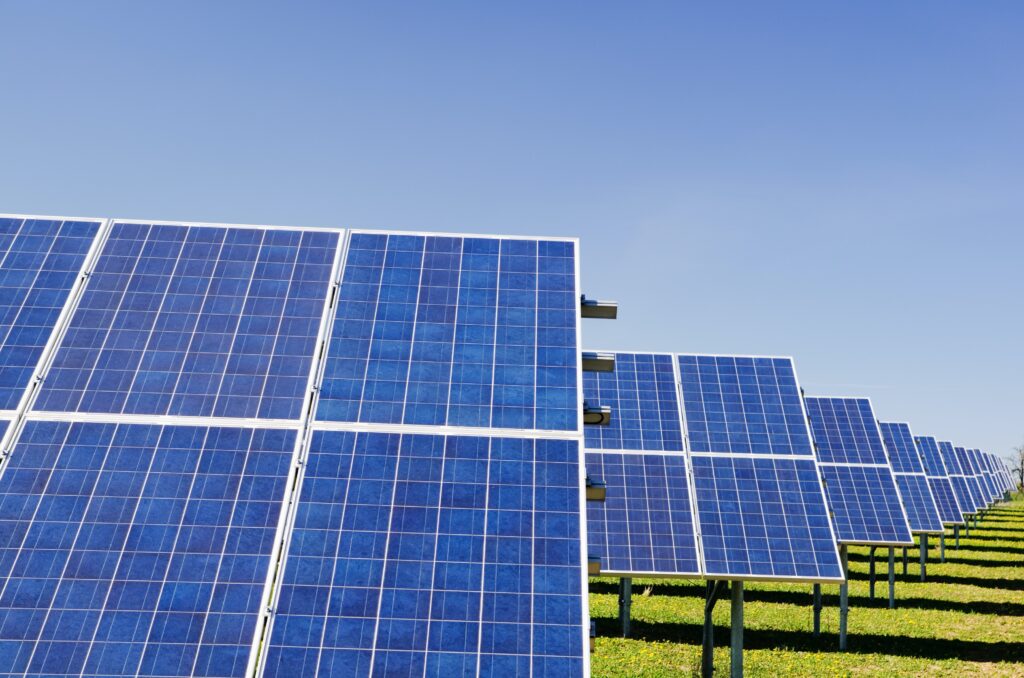Imagine being able to power your entire 2000 square-foot house with the energy of the sun. In this article, we will explore the answer to the burning question: how much solar power is needed to sustain a home of this size? By breaking down the factors such as location, energy consumption, and solar panel efficiency, we will uncover the magic number that can make your home self-sufficient and environmentally friendly. So get ready to harness the power of the sun and embark on a journey towards a more sustainable future.

Understanding Solar Energy
Definition of solar power
Solar power is a form of renewable energy that is harnessed from the radiant light and heat emitted by the sun. It is a clean and sustainable alternative to traditional energy sources such as fossil fuels. Solar power is converted into electricity through the use of photovoltaic (PV) cells, which are commonly found in solar panels.
How solar power is harnessed
Solar power is harnessed through the use of solar panels, which are made up of many individual photovoltaic cells. These cells are made from semiconductive materials, usually silicon, that absorb photons from sunlight and generate an electric charge. The electricity produced by the solar panels can be used directly to power household appliances or stored in batteries for later use.
The efficiency of solar power
The efficiency of solar power refers to the ability of solar panels to convert sunlight into usable electricity. The efficiency of solar panels can vary depending on several factors, including the quality and type of solar cells used, the angle and orientation of the panels, and the level of sunlight available. Generally, solar panels have an efficiency ranging from 15% to 20%, meaning they can convert 15% to 20% of the sunlight they receive into electricity.
Solar Power and Household Energy Consumption
The average energy consumption of a 2000 square-foot house
The average energy consumption of a 2000 square-foot house can vary depending on factors such as the climate, the efficiency of appliances, and the energy usage habits of the residents. However, on average, a 2000 square-foot house consumes around 10,000 to 12,000 kilowatt-hours (kWh) of electricity per year.
Importance of energy-efficiency in a house
Energy-efficiency plays a crucial role in reducing household energy consumption. By implementing energy-efficient measures such as insulation, energy-efficient appliances, and LED lighting, homeowners can significantly decrease their energy usage. This, in turn, can reduce the number of solar panels needed to meet their electricity needs and ultimately save them money.
Other factors affecting house energy consumption
Several factors can affect the energy consumption of a house, including the number of occupants, the types of appliances used, and the insulation and ventilation of the house. Additionally, the climate and geographical location of a house can impact energy usage, as heating and cooling demands may vary based on the region’s climate.
Assessing Solar Panel Efficiency
Factors contributing to solar panel efficiency
Several factors contribute to the efficiency of solar panels. The quality and type of solar cells used in the panels are crucial determinants. Monocrystalline solar cells, for example, tend to have higher efficiency compared to polycrystalline or thin-film solar cells. Additionally, the orientation and tilt of the solar panels, as well as the amount of shade they receive, can affect their efficiency. Regular cleaning and maintenance of the panels are also essential for optimal efficiency.
Understanding panel efficiency ratings
Panel efficiency ratings indicate the percentage of sunlight that a solar panel can convert into electricity. Higher efficiency ratings mean that a solar panel can generate more electricity from the same amount of sunlight compared to lower-efficiency panels. When choosing solar panels, it is important to consider the balance between efficiency and cost, as higher efficiency panels generally come at a higher price.
Role of location and climate in panel efficiency
The location and climate of a house can have a significant impact on the efficiency of solar panels. Regions with higher levels of sunlight, such as areas close to the equator, can benefit from increased solar panel efficiency. Additionally, cooler climates can also enhance the performance of solar panels, as excessive heat can decrease their efficiency. Therefore, it is important to consider the specific climate and location when assessing the potential efficiency of solar panels.
Estimating Solar Panel Needs for a 2000 Square-foot House
Typical energy needs of a 2000 square-foot house
As mentioned earlier, the average energy consumption of a 2000 square-foot house is around 10,000 to 12,000 kWh per year. To estimate the number of solar panels needed to meet these energy needs, it is necessary to consider the efficiency of the panels and the amount of sunlight available in the specific location.
Calculating the number of panels needed based on efficiency and house energy consumption
To calculate the number of solar panels needed, the first step is to determine the total energy consumption in kilowatt-hours per year. Then, divide this number by the average energy production per panel in kilowatt-hours per year, taking into account the efficiency rating of the panels. This calculation will provide an estimate of the minimum number of panels required to generate enough electricity to meet the house’s energy needs.
Variations depending on household energy use patterns
The number of solar panels required may vary based on the household’s energy use patterns. Homes that consume more energy during peak sunlight hours may require fewer panels compared to homes that have higher energy demand during non-peak sunlight hours. It is essential to evaluate individual energy consumption habits and tailor the size of the solar panel system accordingly.

Solar Panel Installation Costs
Cost variations based on panel efficiency
The cost of solar panel installation can vary depending on various factors, including the efficiency of the panels. Higher efficiency panels generally come at a higher cost due to the advanced technology and materials used in their manufacturing. However, it is important to consider the long-term benefits and potential savings in electricity bills when evaluating the cost-effectiveness of higher efficiency panels.
Labor and installation costs
In addition to the cost of the panels themselves, solar panel installation also involves labor and other associated costs. The installation process can include tasks such as mounting the panels, wiring connections, and installing inverters or battery storage systems. Labor costs can vary depending on the complexity of the installation and local labor rates.
Additional costs such as inverters or battery storage
In some cases, additional components may be required to optimize the performance of a solar panel system. These components can include inverters, which convert the direct current (DC) generated by the panels into the alternating current (AC) used in households, and battery storage systems, which can store excess electricity for use during times when sunlight is limited. These additional costs should be considered when estimating the total cost of solar panel installation.
Economic Savings of Solar Power
Estimated bill savings from solar power
Solar power can result in significant savings on electricity bills. By generating their own electricity from solar panels, homeowners can reduce or even eliminate their reliance on grid electricity, leading to lower monthly energy bills. The exact amount of savings will depend on factors such as the size of the solar panel system, the energy consumption of the house, and the local electricity rates.
Recouping the cost of solar panel installation
While the initial investment in solar panel installation may seem significant, homeowners can recoup their costs over time through electricity bill savings. The length of time required to recoup the investment, known as the payback period, will depend on factors such as the cost of installation, the energy savings achieved, and any incentives or rebates available. Generally, the payback period for solar panel installation ranges from 5 to 15 years.
Comparison to traditional power costs over the long term
Another significant advantage of solar power is its long-term cost savings compared to traditional power sources. Unlike conventional electricity, which is subject to fluctuating prices, solar power provides stable and predictable energy costs over its lifespan. This can provide homeowners with greater financial security and protection against rising electricity prices in the future.

Grants and Incentives for Solar Power Installation
Government incentives for solar power
Many governments offer incentives to encourage the adoption of solar power. These incentives can include tax credits, grants, or subsidies that help offset the initial installation costs. By taking advantage of government incentives, homeowners can make solar panel installation more financially feasible and may also contribute to reducing their carbon footprint.
Utility company rebates or incentives for solar power
In addition to government incentives, utility companies often provide rebates or other incentives to customers who install solar panels. These incentives can vary depending on the utility company and the region, but they generally aim to promote the use of renewable energy sources and reduce strain on the electrical grid. Consulting with local utility companies can provide homeowners with valuable information on available rebates and incentives.
Charitable or nonprofit programs providing solar power support
Charitable or nonprofit programs dedicated to promoting solar power adoption may offer financial assistance or low-interest loans to homeowners interested in installing solar panels. These programs often have a mission to facilitate the transition to clean energy and may prioritize supporting households with limited financial resources. Researching and reaching out to such programs can help homeowners access additional funding options for their solar panel installation.
Solar Power and Environmental Impact
Reduction in carbon footprint
One of the most significant environmental benefits of solar power is the reduction in carbon emissions. By relying on solar power instead of fossil fuels, homeowners can significantly decrease their carbon footprint. Solar power does not release greenhouse gases, such as carbon dioxide, into the atmosphere during electricity generation. This reduction in carbon emissions contributes to mitigating climate change and its associated environmental impacts.
Comparing solar power to other renewable energy sources
Solar power is one of several renewable energy sources available today. When compared to other renewable sources such as wind or hydroelectric power, solar power has unique advantages. Solar panels are versatile and can be installed on various surfaces, including rooftops and open land. Additionally, solar power does not rely on specific weather conditions like wind or water availability, making it a more accessible option in different regions.
Decrease in non-renewable resource consumption
Solar power reduces the reliance on non-renewable resources such as coal, oil, and natural gas. By harnessing energy directly from the sun, solar power avoids the extraction, transportation, and burning of these fossil fuels. Decreasing the consumption of non-renewable resources supports sustainable development and helps preserve natural ecosystems affected by resource extraction.
Advantages and Drawbacks of Solar Power
Advantages of solar power for homeowners
Solar power offers numerous advantages for homeowners. Firstly, it provides a sustainable and renewable source of energy, reducing dependence on finite fossil fuel resources. Secondly, it can lead to significant savings on electricity bills over time, especially when combined with energy-efficient practices. Solar panels also have a long lifespan, typically lasting 25 to 30 years, providing long-term benefits for homeowners. Lastly, solar power allows homeowners to have more control over their energy production and consumption, promoting self-reliance and energy security.
Disadvantages or obstacles in using solar power
While solar power has many advantages, there are some disadvantages and obstacles to consider. The upfront cost of solar panel installation can be a barrier for some homeowners, as it requires a significant investment. Additionally, solar panels may not be suitable for all locations, especially if the rooftop is heavily shaded or does not receive adequate sunlight. Some homeowners associations or local regulations may also impose restrictions on the installation of solar panels, which can complicate the process.
Overcoming challenges in solar power implementation
Despite the challenges, there are strategies and solutions to overcome them. Financing options, such as solar loans or leasing programs, can make solar panel installation more affordable and accessible to homeowners. If shading is an issue, alternative mounting options, like ground-mounted systems or solar canopies, can be considered. Working with local authorities and homeowners associations to educate them about the benefits of solar power can help address any restrictions or regulations that may hinder installation.
The Future of Solar Power in Home Energy
Expected developments in solar power technology
The future of solar power looks promising, with ongoing research and development focused on improving solar power technology. Scientists and engineers are working towards increasing the efficiency of solar panels, finding new materials with superior light absorption properties, and developing innovative ways to store and distribute solar energy. These advancements aim to make solar power even more accessible, cost-effective, and efficient for homeowners.
Predicted trends in home energy consumption and production
Home energy consumption and production are expected to undergo significant changes in the future. As energy-efficient technologies continue to advance, homeowners will likely adopt more energy-efficient appliances, HVAC systems, and lighting solutions. The integration of smart home technology may also play a role in optimizing energy usage and increasing energy self-sufficiency. Ultimately, the increasing prevalence of solar power and renewable energy sources is anticipated to transform the way homes are powered and contribute to a more sustainable future.
The role of solar power in future energy strategies
Solar power is expected to play a crucial role in future energy strategies worldwide. As countries strive to reduce their carbon emissions and transition to cleaner sources of energy, solar power offers a reliable and abundant option. The scalability and versatility of solar power make it an ideal solution for both residential and commercial applications. By harnessing the power of the sun, homeowners can contribute to a greener and more sustainable energy landscape, while also enjoying the economic benefits of solar power.
In conclusion, understanding solar power and its potential for powering a 2000 square-foot house involves considering factors such as the efficiency of solar panels, household energy consumption, installation costs, economic savings, incentives and grants, environmental impact, and the future of solar power. By evaluating these aspects, homeowners can make informed decisions regarding solar panel installation, leading to reduced energy costs, environmental benefits, and a sustainable energy future.




